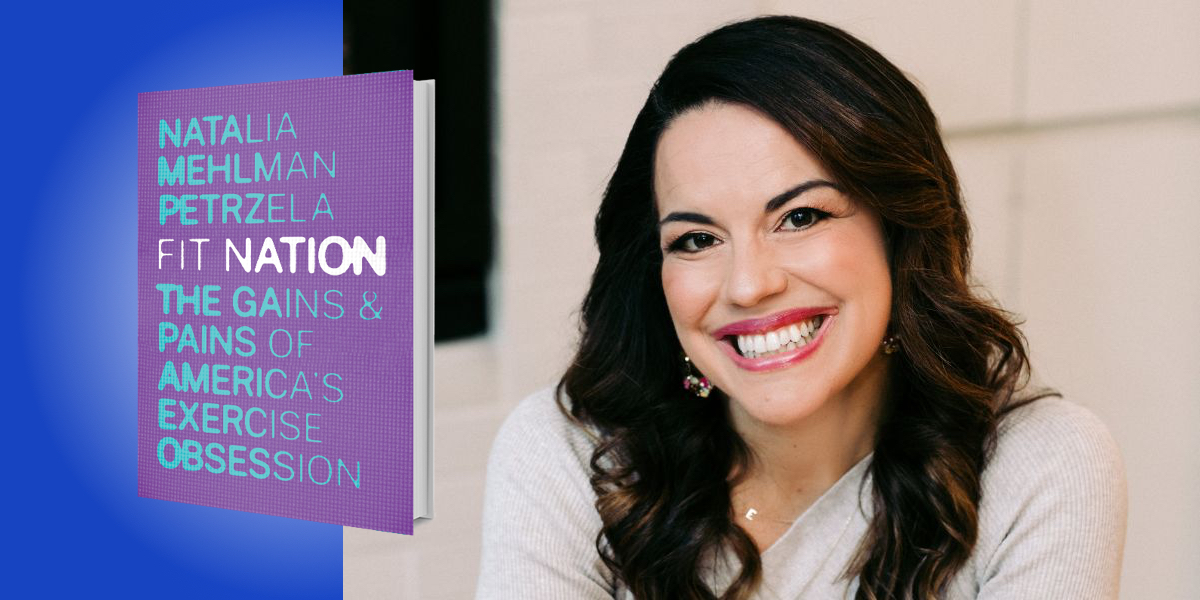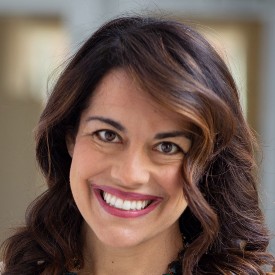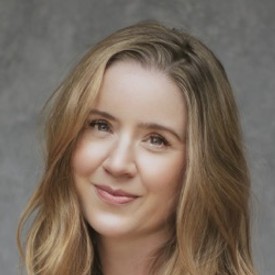Natalia Mehlman Petrzela is a professor of history at the New School. She hosts the podcasts Past Present and Welcome to Your Fantasy.
Below, Natalia shares 5 key insights from her new book, Fit Nation: The Gains and Pains of America’s Exercise Obsession. Listen to the audio version—read by Natalia herself—in the Next Big Idea App.

1. Mind and body are inseparable, and cultivating both is integral to our wellbeing.
Americans fight about a lot of things, so much so that one of the most common ways to describe our society is in terms of division—“polarized,” “riven by culture wars,” or “torn apart by partisanship.”
There is a good reason for that. My first book traced the bitter fights over educational politics that are still very much with us today. But when I turned to study fitness and wellness culture in America, I found that in the very same period—from about the 1960s to the present—Americans have been almost entirely unified in the belief that mind and body are connected, and that it is imperative that we as individuals take initiative to cultivate both. It’s an idea that is widespread today, but it just started to be so in this era.
“Across the political and cultural spectrum, Americans have come to rare agreement that claiming agency over one’s well being, body and mind, is crucial to a life well lived.”
In progressive spaces, like feminist health centers or Black Panther medical clinics, the idea that communities marginalized by the dominant medical establishment could seize control of their own wellbeing—and sometimes through alternative therapies like yoga or acupuncture—was a powerful form of self-determination. On the other hand, I found almost the same rhetoric embraced on conservative Christian college campuses. There, the idea was just as resonant, in part because of the focus on personal responsibility for one’s health, through discipline and willpower.
Across the political and cultural spectrum, Americans have come to rare agreement that claiming agency over one’s well being, body and mind, is crucial to a life well lived.
2. ‘Third places’ are crucial to human thriving.
Sociologist Ray Oldenburg coined the term “third place” to describe the spaces between work and home where people find community, leisure, and social interaction—in short, where we make meaning of their lives.
When I set out to write a book about exercise culture, I did not realize how important this concept would be, and how much the gym has served as a “third place.” This holds across the board: exhausted young mothers in the 1970s would head to Jazzercise centers—which provided childcare—to spend an hour dancing and sweating together, their time together chatting before and after class as important as the main event. (Gloria Steinem once wrote that the locker room in such places tended to foster an “instant sisterhood.”) Similarly, at the height of the AIDS epidemic, gay men often ostracized in a moment of intense homophobia, found solace at gyms that not only allowed them to bulk up to show they were not sick but also functioned as community centers, art museums, and mutual aid societies. The examples of this abound, from jogging clubs to yoga classes to fitness-themed retreats.
“Exercise, for a huge swath of those who participate, is about much more than the physical exertion.”
Today, in an era of declining religious participation, online shopping, and most recently, the coronavirus pandemic, this has never been more true. Through advanced streaming technology, we are now able to burn as many calories in our living rooms as at the gym, but there’s a reason running clubs came back especially quickly in the pandemic, and that now brick-and-mortar fitness businesses are seeing rebounding membership numbers: exercise, for a huge swath of those who participate, is about much more than the physical exertion.
3. Expertise isn’t everything.
I spent seven years in graduate school getting a PhD, and now, as a college professor, I spend a lot of my time equipping students with the body of knowledge and skills they need to receive a bachelor’s or master’s degree in history. So yes, I do believe in the importance of expertise, traditionally defined. But writing this book, I learned that some of the most important and exciting insights and breakthroughs don’t necessarily happen in a university lab or archive or at the hands of people with loads of letters after their names. The birth of the fitness industry—not that long ago, in the 1960s and beyond—is very much such a story.
- When Bonnie Prudden, a 1950s homemaker and outdoorswoman, noticed that children in her community seemed to be sluggish and putting on weight, there were no studies to confirm it, or even scholars paying attention. She teamed up with a doctor friend to do their own comparative assessment with European children—and took their findings all the way to the White House, ultimately sparking the physical education policy that still shapes physical education today.
- Similarly, in 1966, when Bill Bowerman, a track and field coach at the University of Oregon, wrote a book extolling the virtues of jogging, it was very thin. There was no research yet to make the claim that cardio is good for you. Yet it inspired millions to lace up and take to the streets—and it propelled Bowerman to partner with one of his former student-athletes, Phil Knight, to found Nike.
- Or take Molly Fox, the dancer who established an exercise studio in NYC in the early 1980s that became a global destination for fitness enthusiasts and instructors seeking out the most innovative programming. Molly went on to become an international presenter and educator on the fitness conference circuit, but when she began, it did not even exist. She told me that to get inspired, she’d roam the aisles of The Strand bookstore, paging through dance and anatomy books. “It was really the Wild West,” she said.
Tracing the origins of an industry reminded me that expertise doesn’t begin with a diploma or institutional recognition, it begins with a spark of inspiration, which anyone can possess.
4. Fitness is a social justice issue.
Some people turn their nose up at fitness pursuits, dismissing them as the leisure pastimes of the affluent—and fitness, in its fanciest interactions, absolutely is that. But scratch the surface a little more and you’ll find an overwhelming consensus among people that movement and exercise are absolutely crucial to living a healthy, fulfilled life. That’s the attitude that keeps the $25 billion fitness industry growing every year. So why do only one-fifth of Americans get the federally recommended amount of exercise? And why are more affluent Americans so overrepresented in that group?
It comes down to the fact that even as we celebrate exercise as crucial to health and happiness, we make it far more accessible to those who can afford it. Sure, the industry is booming, but physical education has been cut back for decades. So too have public recreation facilities been reduced: a wide swath of working class Americans live in “fitness deserts,” which means too far to walk to a public park. And even when the park or trail is there, it’s not always clean, well-lit, or safe.
The neighborhoods that can use these free facilities most often have the least access. During the pandemic, for example, Jamel Ali set up an open-air gym in Harlem’s Marcus Garvey Park, training teens, elderly people, and whoever wanted to join, with boxing bags hung from trees and kettlebells he stored under a tarp. The NYT described as “a refuge” from a neighborhood with high rates of both crime and illness—but the police recently shut him down for operating without a permit.
“Movement and exercise are absolutely crucial to living a healthy, fulfilled life.”
In another case I write about, in Chicago, a teenager named Vincent Gonzalez was busted for repeatedly sneaking into a gym franchise to lift weights and play basketball. This case may have ended reasonably well—a cop was so touched by Gonzalez’s athletic commitment that he bought him a gym membership—but it doesn’t change the essential point: we rightly believe exercise is imperative to a good life, but it’s mostly available on a private market, only to those who can afford it. We’ve got to reframe and realize that fitness is not a luxury—it’s a social justice issue.
5. No opportunity is too small to make progress.
Once upon a time, I was a person with a lot of control over her time, and I was especially deliberate about exercise and writing. I would go on long training runs or travel across town to try a new yoga class. I would block out weeks for archival trips. And then I’d spend hours writing without interruption, listening to the perfect playlist and sipping coffee from my favorite mug. Each of these pursuits energized me to pursue the other. I had a system!
That’s not how this book took shape. I researched and began to write while teaching full time and raising two small children. Still, I had childcare and lived in NYC, with plenty of exercise options blocks from my home. Busy, but fine! But then, the pandemic hit. I scrambled to move my courses online, and had more than half the book to write. Plus, two kids in Zoom school and my husband, also WFH, no support in caring for them or our home. Then I got a femoral stress fracture that had me limping around with a cane. For a few weeks, I all but abandoned the manuscript and any attempt at movement beyond shuffling around the house. If I couldn’t immerse myself in the intense way I was used to, I didn’t want to do anything.
Soon—mostly due to my looming contract and worsening mood—I began to pull myself into a new routine. If I could carve out 45 minutes in the morning before the kids got up, I’d force myself to wake up and write straight through, even if the words on the page made me cringe. The kids might only have 20 minutes of overlapping Zoom school, but I’d commit to do any little bit I could: fix a footnote, or edit a messy sentence. As my leg healed, I took the same approach to exercise, doing a few sets of knee pushups to build upper body strength, or walking the two-mile loop I once used for speed work. And guess what? I finished the book and got back to running half marathons and even teaching fitness. Months earlier, I would have said just 20 minutes of writing or exercise “wasn’t worth it” because what could you really get done? I learned the hard, but ultimately invaluable, way that no opportunity is too small to move forward, and big achievements begin with small steps—sometimes because there is no other choice.
To listen to the audio version read by author Natalia Mehlman Petrzela, download the Next Big Idea App today:
































